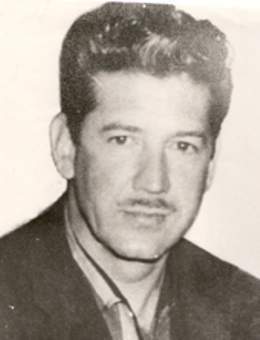
Havana ephemeris. June 23.
1805. Domingo Goicuría Cabrera is born in Havana.

He grew up in a wealthy merchant family. Throughout his existence he was a prominent independence fighter. In 1852, after being deported from Cuba, he settled in New York. There he learned that his property had been confiscated and that the colonial government had sentenced him to death. He then participated in the organization of the Revolutionary Junta based in the United States and was elected Treasurer. At the head of the most radical group of the members of said junta, he later broke with the supporters of the annexation of Cuba to the United States and left historical record of his determination to fight for the total independence of his native land and the abolition of slavery in a manifesto that he circulated in New York on June 10, 1855. Some time later, as a result of the disappointments suffered in the contacts he had with opportunist and adventurous elements, he understood that the path of armed struggle was the indicated one to achieve total Cuban liberation.
Back in Cuba for his ideas he was tried and sentenced to death by garrote. A few days before the execution, in a letter addressed to his brother, he regretted not having fallen into a confrontation with the Spanish forces, but told him that he would know how to die like those who defend the rights of man and was happy because the independence of Cuba was no longer what a matter of time An instant before being executed in the Castle of the Prince he shouted with particular firmness: A man dies, but a people is born!
1958. He is assassinated in Havana by the repressive forces of the dictator Fulgencio Batista, the revolutionary combatant Eduardo García Lavandero.

Born in the town of Artemisa, as a great Martian, since he was a teenager, he showed his concerns of a political nature and his concern for the situation Cuba was suffering. Already in the 1940s he had been fighting Batista, during the period in which he remained in power with the supposed status of elected president in an election. He initially believed, like a part of the people, in the possibility of a change for the country when the Authentic Party won the 1944 elections.
After the coup of March 10, 1952, he began to fight Fulgencio Batista again. When José Antonio Echeverría, President of the University Student Federation, at the University of Havana began to think about the possibility of carrying out an action against the dictator, he agreed to offer the weapons he had stored, but when it was carried out the assault on the Presidential Palace, in March 1957, was outside of Cuba and therefore did not participate in said action. Later he linked up with members of the Revolutionary Directorate who were in the United States, he was even named second in command of that organization. Some time later he arrived in Cuba through the Nuevitas area on an expedition organized by the Revolutionary Directorate. The combatants were able to move to the mountainous area of the province of Las Villas and later he left for Havana. In the capital he continued to prepare actions until he was discovered when he was on his way to the area of the Cayo Hueso neighborhood where one of the meeting houses of the Revolutionary Directorate was located. He decisively confronted the forces of the dictatorship and was wounded. He fought until the last bullet, and when he had no more projectiles left in a gesture of rage he threw his pistol in the face of an agent of the dictatorial regime. He was immediately riddled with bullets.